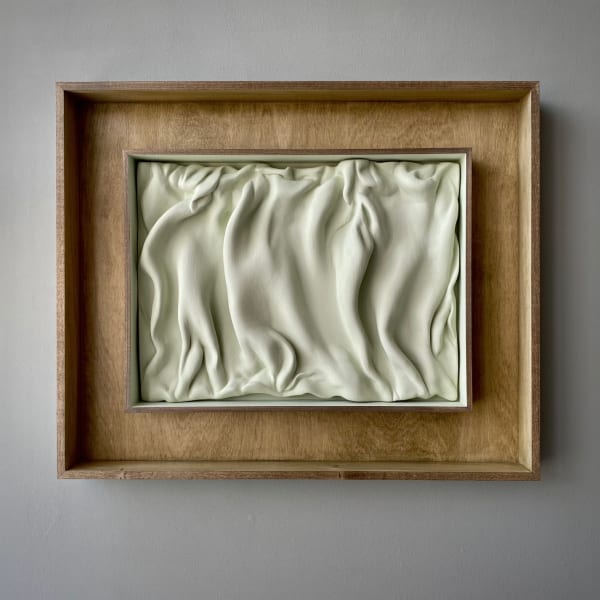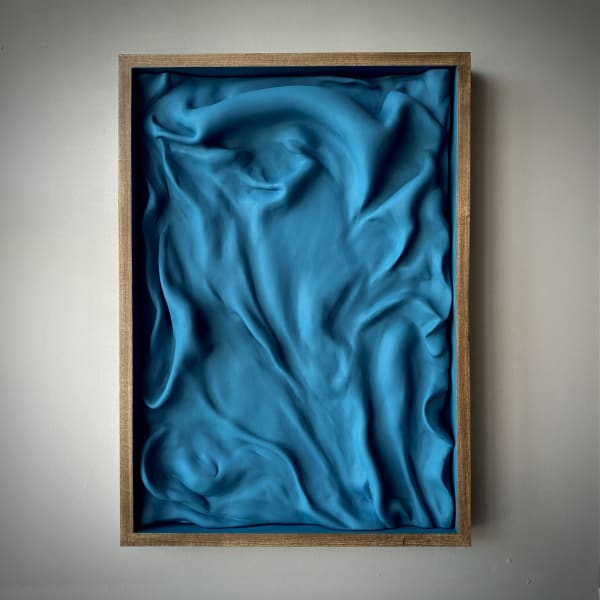-
Richard Stone
The Knight Divided -

-
-
Solo exhibitions include the knight divided, Kristin Hjellegjerde Gallery, London (2022); everywhen, Kristin Hjellegjerde Gallery, London (2017); in the shape of centuries, James Freeman Gallery, London (2015); gleam, Kristin Hjellegjerde, London (2014); the end of england, Galleries Goldstein, London (2012); new portrait capes, The Horse Hospital, London (2012); and a walk at dusk and dawn, Burgh House (2012).
Select group exhibitions include Art Paris, Kristin Hjellegjerde Gallery, Paris (2022); Under a Serene Sky, CoBra Gallery, Shanghai; Facing the Sun, Kristin Hjellegjerde Gallery, Schloss Görne, Germany (2021); Enter Art Fair, Copenhagen with Kristin Hjellegjerde Gallery (2021); Westbund Art Fair, Shanghai with CoBra Gallery (2021); Quickenings James Freeman Gallery, London (2021); A Splendour among Shadows (with Lorena García Mateu), Kristin Hjellegjerde, London (2020); All the Days and Nights, Kristin Hjellegjerde, London (2020); Art Dubai (2019); Skulpturegarten, Galerie Brunnhofer, Linz, Austria (2018); Art Brussels with Kristin Hjellegjerde Gallery (2018); Kunstsalon Perchtoldsdorf, Burg Perchtoldsdorf, Austria with Brunnhofer Galerie (2018); Sweep~Landskip, Kinokino, Sandnes, Norway, curated by Roberto Ekholm (2018); Guildhall, London (2018); Royal Society of Sculptors Summer Exhibition, Dora House, London, curated by Jo Baring, Director of the Ingram Collection (2018) and Imago Mundi, Triestre, Salone degli Incanti, Italy (2018); The Four Domes Pavilions, National Museum of Wrocław (2017); Volta Basel with Kristin Hjellegjerde Gallery (2017); Volta Basel with Kristin Hjellegjerde Gallery (2016); London Art Fair with Kristin Hjellegjerde Gallery (2016); Konsthallen - Bohusläns, Sweden (2016); Ha gamle prestegard, Norway (2015).
-
Highlights and Collections Stone’s works can be found in prominent collections in the UK, Europe and the United States. He has been published alongside Vija Celmins, Kris Martin and Gabriel Orozco and exhibited with Matt Collishaw, Derek Jarman and Michael Raedecker. He has an MA from Central Saint Martins and has been awarded and shortlisted for numerous awards and residencies, including Art Council England Grant for the Arts, the Brian Mercer Bronze Scholarship and Residency, and the Threadneedle Prize for Painting and Sculpture.
-
-

-
-
For Stone, the creative process begins and ends with the material. He works with his hands, allowing his thoughts and feelings to organically filter through his gestures until a shape or form begins to emerge. As such, the works possess a compelling sense of rawness and intimacy that unsettles the historic monumentality of sculpture and invites the viewer to form a more embodied, emotional connection to the work. The title of this latest exhibition makes reference to this process by personifying the notion of conflict. The knight - conventionally a masculine, heroic figure - is literally deconstructed in Stone’s work, appearing in brief glimpses of limbs that are then engulfed by swathes of coloured clay or marble, but we can also understand the tumultuous scenes as visual representations of psychological states or rather, transformation.
The show begins with the statue in the sea, depicting a figure and horse descending or ascending from the depths. The piece is a continuation of Stone’s recent works in which he wrapped abstracted fabric rendered from clay around the body of found horse statues to subvert ideas of power and masculinity, but here, both figure and animal have been absorbed back into the material. Whether or not this is perceived as a process of destruction or renewal is left for the viewer to decide. At the same time, however, it’s hard not to view the work through the lens of ongoing contemporary debates around the value or purpose of public art. ‘It seems to have become a very binary discussion, but what’s exciting is that we are now in a transitional space where we can actually talk about what we might want rather than what we do not like,’ says Stone, but inevitably, it is also a space of uncertainty, especially for a male sculptor. Stone plays with this idea by moving away from the elevated structure of a plinth to present, instead, a series of deeply framed tableaux, which invite the viewer to perceive the work as image or painting as well as an object. The fluid and richly coloured forms appear to warp and dissipate before the eye, disrupting our ability to ascertain, and more crucially, label what we see.
The piece entitled the bather, after Duncan Grant’s 1911 painting Bathing, plays further with our sense of perception as amorphous watery shapes, create an impression of an undulating motion. As the surface seems to shift, the viewer experiences an almost dizzying sensation which both confounds and liberates the gaze. Not all of the works are as abstract, however. A smaller scale piece entitled lo! lonely horse, for example, comprises a tiny porcelain horse - a found object - set adrift in ceramic waves. ‘I made this work deliberately small so as to negate the idea of monument and especially the traditional, inflated masculine monument of plinth and heroic ideal, represented by increasingly questionable heroes,’ comments Stone. ‘The biblical horses of the apocalypse, which are traditionally associated with dominant masculinity, are reduced to one, lone horse lost in a sea of unknowing.’
-
Similarly, where the knight appears in the works it is as a solitary figure, lost between waves or amongst the intertwined branches of trees. For Stone, the forest, like the ocean, represents a transitional space rather than a specific geographical location or environment. The trees are abstracted to thick, muscular forms, creating an unnerving impression of density that contrasts the softer, curvaceousness of the waves in the water-based works. Stone notes that he ‘wanted to draw on the idea of masculine and feminine energies but without setting them up as oppositional.’ Indeed, although the works convey distinct atmospheres, there is a strong visual relationship between the forms that creates an impression of wholeness. This is perhaps most clearly expressed in a new bronze work entitled the ancient principle, which reimagines the traditional sculptural figure of mother and child in the more ambiguous form of a trinity of birds. Once again, the knight appears in glimpses, as a softer, more fluid presence that has an almost omniscient quality as 'a universal protector rather than a symbol of archaic masculinity.'
In the exhibition’s closing piece, icarus and the sea, Stone draws on the Greek myth in which Icarus, paying no heed to his father’s warnings, flies too close to the sun. The wax of his makeshift wings melts and he plummets to his death. However, in Stone’s sculptural retelling, Icarus, rather than drowning in the waves, is reclaimed by the sea (traditionally a female energy), relating back to the notion of wholeness and circularity while also turning the original narrative on its head by offering an alternative, more uplifting perspective.
Amidst the continued tumult and uncertainty of contemporary existence, the knight divided invites us to seek solace in the creative potential of transitional periods - as a time of renewal and transformation.
-
-
Enquire
-
 Richard Stone, the statue in the sea , 2022
Richard Stone, the statue in the sea , 2022 -
 Richard Stone, knight in the forest , 2022
Richard Stone, knight in the forest , 2022 -
 Richard Stone, the bather, 2022
Richard Stone, the bather, 2022 -
 Richard Stone, wrapped in sunlight , 2022
Richard Stone, wrapped in sunlight , 2022
-
 Richard Stone, cavallo, 2022
Richard Stone, cavallo, 2022 -
 Richard Stone, ghosts in an english garden , 2022
Richard Stone, ghosts in an english garden , 2022 -
 Richard Stone, icarus and the sea, 2022
Richard Stone, icarus and the sea, 2022 -
 Richard Stone, the ancient principle (mother and child) , 2022
Richard Stone, the ancient principle (mother and child) , 2022
-
-
Richard Stone : The Knight Divided
Past viewing_room


















